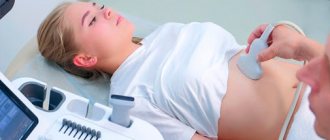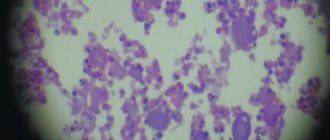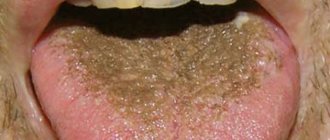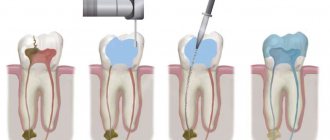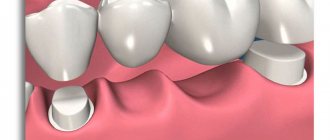– substances of natural or semi-synthetic origin that inhibit the growth of microorganisms or cause their death.
Antibiotics only affect microorganisms. Their effect does not apply to viruses or fungi. Therefore, it is advisable to use antibiotics for diseases caused by microbes. In case of viral diseases (hepatitis, influenza, etc.), their use makes no sense and can even cause harm due to side effects.
Depending on the chemical structure, antibiotics are divided into groups , for example, fluoroquinolones, penicillins, tetracyclines, macrolides, cephalosporins, etc.
Each group may contain antibiotics of different generations (for example, in the fluoroquinolone group, ciprofloxacin belongs to the first generation, levofloxacin to the second, and moxifloxacin to the third).
Basic principles of antibacterial therapy
There are certain requirements for prescribing antibiotics.
The antibiotic prescribed by the doctor must penetrate well into the tissues where there is a purulent-inflammatory process. For example, lincomycin penetrates well into bone tissue and is used for osteomyelitis, amoxiclav - into soft tissues, and can be used in the treatment of boils and erysipelas.
The antibiotic must have an inhibitory effect on the microorganism that caused the inflammation. For example, it makes no sense to use Tsifran for anaerobic infections (caused by anaerobic microorganisms), because Tsifran has no effect on them. In such a situation, Avelox is indicated - an antibiotic that acts incl. and anaerobic microorganisms.
To determine the sensitivity of the microorganism to antibiotics, a culture is taken from the wound. The difficulty is that the doctor usually receives the culture result in about 5–8 days, and an antibiotic must be prescribed immediately upon detection of microbial inflammation. In such a situation, empirical antibiotic therapy is used, the meaning of which is to prescribe an antibiotic that suppresses the most likely causative agent of the infection. For example, for a boil or carbuncle, antibiotics are prescribed that suppress Staphylococcus aureus, because It is this microorganism that most often causes suppuration in boils and carbuncles. Then, when the culture result comes, you can change the antibiotic to the one to which the microbe is sensitive in this particular case (if this is still necessary).
Antibiotics should be used to minimize the risk of side effects and complications in a given patient. For example, fluoroquinolones should not be prescribed to patients with epilepsy; aminoglycosides are not suitable for patients with hearing loss.
Antibiotics of the 21st century
In the first part of the article, we talked about the main myths associated with antibiotics and described in detail the penicillin group, and now let’s move on to the next generation of antibiotics.
CEPHALOSPORINS
Microbes often act, if not wisely, then quite logically.
If they are threatened by penicillin antibiotics, the microbes begin to destroy penicillins (if only we could do this - something is bothering us, but we do it! - and wipe them off the face of the earth).
The weak link of penicillins is the so-called beta-lactam ring (you will often see this term in the description of drugs, so it is better to remember it). It is this beta-lactam ring that microbes have learned to break. And the tool for breaking is special enzymes, beta-lactamases.
So, in short, antibiotics of the cephalosporin group are the same penicillins, which work in exactly the same way, but they are not afraid of beta-lactamases. This means that they can deal with microbes that the same ampicillin or even amoxicillin with clavulanic acid cannot cope with.
The “arms race” between microbes and pharmacists over time gave rise to the second, third, and then fourth generations of cephalosporin antibiotics (when pronouncing some of the names of these drugs, even doctors are scared, immediately imagining what flora these antibiotics are intended against).
WHEN DOCTORS PRESCRIBE CEPHALOSPORINS
If you are allergic to regular penicillins.
Of course, the chemical structure of penicillins and cephalosporins is similar, but the chance that the patient will not have an allergic reaction to cephalosporins is still very high; If penicillin antibiotics do not treat the infection. This often happens if a patient becomes infected with some kind of staphylococcus or streptococcus already in the hospital: the microbes there are already poisoned by anything, and therefore are especially resistant to tablets from a regular pharmacy.
Microbes, unfortunately, learn quickly and evolve quickly. This is understandable: they only need 20 minutes to change generations.
And yet, doctors always recommend starting treatment with antibiotics from the penicillin group, so as not to breed antibiotic-resistant flora.
ANTIBIOTICS OF THE MACROLIDE GROUP
Penicillin revolutionized the treatment of infections. But very soon it turned out that he was capable of killing too. Here and there, patients began to die from anaphylactic shock caused by penicillin (remember - there are allergic reactions to penicillin?).
What could the scientists do? Just develop new antibiotics.
Penicillin began to be widely used in 1943 (in the USA and USSR, and almost simultaneously). And already in 1949, Alberto Aguilar in the Philippines discovered a new (after the green mold from which penicillin was isolated) special fungus that suppresses the growth of bacteria.
In the USA, a year later, another scientist, McGuire, isolated a new antibiotic from it - erythromycin (for some reason Wikipedia persistently writes that Eli Lilly isolated it, but this is not so - McGuire simply worked for him).
Erythromycin still works: it turned out that bacteria can adapt to it much less well than to penicillin.
WHAT CAN MACROLIDES DO?
Firstly, bacteria actually adapt to macrolides much more slowly than to penicillins.
But they also adapt. That is why erythromycin has now grown into a huge family of “younger brothers” - semisynthetic macrolides and azalides, which some pharmacists classify into another separate group - the fourth and last group of antibiotics used in pediatrics.
Secondly, macrolides do not kill bacteria - they deprive them of the ability to reproduce, as a result of which bacterial cells, without causing harm to humans, very quickly die by natural causes or become victims of the immune system.
Thirdly, macrolides can penetrate inside cells and overtake the bacteria that love to settle there - chlamydia and mycoplasma.
Chlamydia and mycoplasma do not have a cell wall, due to which they are invulnerable to penicillins (penicillins kill only bacteria that have a cell wall. If there is no cell wall, the task is to strangle Kolobok - it seems that you need it by the neck, but it simply isn’t there). But for macrolides, the absence of a cell wall is not an obstacle: chlamydia and mycoplasmas die upon contact with macrolides, although not so quickly.
WHEN DO DOCTORS PRESCRIBE MACROLIDES?
- the patient is allergic to penicillins;
Routes of administration of antibiotics
- oral (by mouth), intramuscular and intravenous - should also be taken into account in outpatient practice. Thus, for patients receiving treatment at home, it is not advisable to prescribe antibiotics that require three intramuscular injections (for example, cefazolin), because such a patient will have to go to the treatment room three times a day.
Only a doctor should prescribe an antibiotic , because the use of antibiotics without indications or when there are contraindications can cause side effects and complications, and ultimately cause harm rather than benefit.
Don't repeat at home
An antibiotic is a powerful medicine and should always be prescribed by a doctor. For more than two decades, many pharmacies, in an effort to increase revenue, freely sold prescription drugs, except for narcotic and psychotropic drugs. This led to the fact that many doctors forgot how to fill out prescription forms, writing prescriptions on pieces of paper without even stamping them. And patients bought antibacterial, also known as antimicrobial, drugs for self-medication. Control has only tightened in the last two years.
“Even before I started working at the Fantasy Children’s Clinic,” says pediatrician Victoria Alipova, “a child was brought to the appointment who complained of abdominal pain and bowel movements. The medical history showed that the boy had been treated with antibiotics 12 times over the past year for every cold, including ARVI, when such medications are useless. For the first time, the doctor prescribed an antibiotic, and then the child’s mother acted by analogy. It was enough to stop the drug, and the problem with the intestines would normalize. Children can take antimicrobials in the form of syrups or suspensions even from birth, but only according to indications determined by the doctor. Many doctors prescribe such medications for any reason.”
Antibiotics have many side effects. First of all, they destroy the intestinal microflora: diarrhea, vomiting, possible colitis, liver and kidney dysfunction, and allergies. In such cases, probiotics or other drugs that normalize the functions of the gastrointestinal tract are often prescribed in parallel. However, urologist Rinaz Kamaletdinov says that the clinical recommendations do not indicate that such drugs can stabilize the intestinal microflora against the background of antibacterial therapy. And in each case of illness, only a specialist can make a decision on the type of therapy:
“Treatment with antibiotics should be carried out by a doctor,” Dr. Kamaletdinov is sure. - Even if similar symptoms reappear, you should not take the pills left over from your previous illness. You can consult a doctor online or by phone. In urology, different types of antibiotics are used, most often fluoroquinolones, especially levofloxacin. It is often necessary to change the pharmacological group, dose, duration and schedule of administration. For example, a patient with bacterial prostatitis caused by Escherichia coli was given one type of antibiotic. Treatment requires 28 days, but symptoms returned in the 3rd week. It turned out that a second infection appeared in the body, and E. coli developed resistance to the drug. I had to additionally prescribe a drug of a different spectrum.”
Interactions of antibiotics with other drugs
Tetracyclines cannot be combined with therapy with medications containing the following substances:
- calcium
- magnesium
- iron
- zinc
- other metal ions
The action of tetracycline drugs is negatively affected by concurrent therapy with barbiturates and carbamazepine. It should be taken into account that antibiotics from this series reduce the effectiveness of oral contraceptive pills. Treatment with macrolides and aminoglycosides should not be combined. Tetracyclines and chloramphenicol or lincomycin are not prescribed together. There are a number of other features of the interaction of antibiotics and other drugs that the attending physician should talk about, taking into account the patient’s medical history and his current diseases, in addition to inflammation of the appendages.
Treatment of antibiotic-associated diarrhea
Diarrhea that develops while taking antibiotics requires adjustment of the treatment regimen. You should not stop taking medications on your own; you should consult your doctor. Typically, the course of antibacterial therapy is interrupted or the drug is replaced with an antibiotic of a different group.
Normalization of digestive processes, intestinal motility and stool consistency are tasks that require an integrated approach. There are three general principles that are important for all people suffering from diarrhea after taking antibiotics:
- Nutrition correction: it is important to follow a diet. The diet should include crackers and rice water. It is important to reduce the amount of carbohydrates consumed as much as possible, and also give up milk, dairy products, baked goods, fresh vegetables, berries and fruits; legumes, pasta.
- Compliance with the drinking regime: it is necessary to drink at least 2 liters of water per day to replenish fluid loss during watery stools.
- Symptomatic therapy: the pathological process can be stopped with the help of medications.
Due to the fact that many sources of natural probiotics and prebiotics are prohibited for diarrhea, one of the key principles of treatment is the prescription of medications containing these components. Strict dietary restrictions require the use of probiotics and prebiotics for antibiotic-associated diarrhea: it is important to restore normal intestinal microflora to prevent the proliferation of opportunistic microorganisms.
In most cases, medication correction is indispensable. Remember that only a doctor can prescribe medications.
There are several groups of drugs that can be recommended for antibiotic-associated diarrhea.
Sorbents
Infectious and inflammatory diseases are accompanied by intoxication of the body, and in the process of antibacterial therapy, decay products of pathogenic microflora accumulate. Therefore, the doctor may prescribe enterosorbents - products that literally absorb toxins and harmful substances and remove them from the body.
Probiotics and prebiotics
It is important to address the root cause of diarrhea and restore normal intestinal microflora after taking antibiotics. For this, probiotics are used - bifidobacteria, lactobacilli, as well as prebiotics - a nutrient substrate to stimulate the growth of one's own beneficial microflora. Synbiotics include both probiotics and prebiotics and are widely used in gastroenterological practice.
If there is a pronounced shift in the microbial balance, the doctor may recommend intestinal antiseptics or bacteriophages - they are designed to prevent the growth of opportunistic microflora and help restore the number of beneficial microorganisms.
Enzymes
Enzyme replacement therapy is not the mainstay of treatment for antibiotic poisoning. However, preparations based on digestive (pancreatic, gastric, intestinal) enzymes stimulate the digestion of food, normalize intestinal motility and peristalsis and participate in the restoration of normal microflora of the large intestine.
Symptomatic therapy
Diarrhea is often accompanied by painful symptoms: flatulence, nausea, cramping and abdominal pain. You can quickly alleviate the condition with the help of medications. They are unable to cope with the main problem, but will bring temporary relief. Report your symptoms to your doctor, and he will select one or more remedies to improve your well-being:
- for increased gas formation - defoamers (drugs based on simethicone) or herbal carminatives;
- analgesics or antispasmodics for pain;
- Oral rehydration solutions are products designed to replenish normal fluid volume and prevent dehydration.
If diarrhea is accompanied by elevated body temperature, the doctor will select an antipyretic drug.
General strengthening agents
Weakened by an infectious or inflammatory disease, as well as subsequent use of antibiotics, the body may require complex recovery. A specialist can prescribe immunomodulators, vitamin-mineral complexes and restorative drugs.
Restrictions in food during diarrhea can also cause hypovitaminosis and lack of minerals. During long-term antibiotic therapy, it is necessary to discuss preventive measures with your doctor in advance.
Antidiarrheal drugs
If you cannot cope with diarrhea, your doctor may prescribe drugs from the following groups:
- eubiotics - live bacteria that are designed to restore the balance of intestinal microflora and restore normal digestive function;
- synthetic drugs based on loperamide: bind to opioid receptors of the intestinal wall and inhibit the release of mediators that stimulate intestinal motility;
- herbal preparations based on tannins.
Sorbents also have an antidiarrheal effect. They are natural and synthetic. Enterosorbents, entering the intestines, absorb toxins and harmful substances, contribute to the formation of stools and their reduction. It is important to remember that at least two hours should pass between taking sorbents and other drugs.
For severe antibiotic-associated diarrhea, antibacterial agents targeting Clostridium difficile or another infectious agent may be appropriate.
The drug “Fitomucil Sorbent Forte” can be used as an adjunct to relieve diarrhea syndrome. It contains inulin, a prebiotic that promotes the growth of normal microflora, as well as 5 types of probiotic bacteria. In addition, the drug contains psyllium, a natural component that helps reduce diarrhea and relieve intoxication, since it turns into a gel and absorbs toxins. The triple effect (enterosorbing, detoxifying and restorative) distinguishes Fitomucil Sorbent Forte from other sorbents prescribed for AAD. Live bacteria populate the intestines and not only help relieve diarrhea, but also improve the condition of the microflora that has been damaged by taking antibiotics.
However, to restore microflora it is not enough to take one drug.
Only a doctor prescribes specific therapy. It is necessary to stop taking uncontrolled medications and agree with a specialist on medications for symptomatic therapy.
Pharmacodynamics of antibiotics
Antibiotics, which are classified as tetracyclines, kill the ability of the pathogen to multiply. They are effective against the following flora:
- gonococci
- streptococci
- staphylococci
- enterobacteria
- pertussis stick
- salmonella
- klebsiella
- spirochetes
- mycoplasma
- chlamydia
Antibacterial drugs from the fluoroquinol group suppress DNA gyrase and topoisomerase, disrupt DNA synthesis, and through these mechanisms they help cope with the disease. If the pathogen is resistant to 1st generation quinolines (which is revealed during therapy), then the doctor prescribes one of the fluoroquinolones. Drugs of this group kill mycobacteria, mycoplasma and pneumococci, but of the 3rd and 4th generation, and the 2nd generation is less effective. Some enterococci can also be destroyed by fluoroquinolones.
Treatment of inflammation of the appendages during pregnancy
Pregnancy is a contraindication for the use of tetracycline drugs, because these drugs enter the fetus through the placenta and can accumulate in its organs and tissues. Because of this, the unborn child’s skeleton will develop incorrectly. Some macrolides are also not used during pregnancy. Clarithromycin has been proven to be harmful to the fetus. But the effects of roxithromycin and midecamycin have not been sufficiently studied today.
The following drugs are relatively safe for the treatment of inflammation of the appendages of pregnant women:
- spiramycin
- erythromycin
- josamycin
If no other treatment is possible, and inflammation of the appendages in a pregnant woman is severe, doctors may resort to prescribing azithromycin. Drugs from the fluoroquinolone group are prohibited from being used during pregnancy.
Principles for choosing antimicrobial drugs
Self-medication with antibiotics is strictly prohibited, since uncontrolled use of potent drugs can weaken the body and worsen the body's defense reactions. The drugs are selected exclusively by the doctor, taking into account the form of the disease and the patient’s condition.
Indications for prescribing antibiotics for the treatment of infectious diseases are the following:
- Development of bacterial microflora in the respiratory tract. This is indicated by sputum with a green or yellow tint, which comes out with a cough.
- Maintaining body temperature above 38.5°C for more than 4 days.
- Severe weakness and the appearance of severe fatigue with minimal exertion.
- The presence of purulent mucus in the stool.
Before a certain type of antibiotic is prescribed, a bacteriological culture must be carried out. To do this, take a swab from the nasopharynx and trachea, as well as mucus from the stool. Samples are placed in a nutrient medium to determine the type of microorganism. After this, a group of antibiotics is selected that destroy certain bacteria.
To ensure that the chosen antibiotic does not provoke a deterioration in the general condition, the following general tests are performed:
- Blood. During the test, the number of main components is determined. When using antimicrobial drugs, a decrease in their levels may occur, so it is important to exclude the possibility of critical indicators.
- Urine. Testing allows you to determine the condition of the urinary system and prevent possible inflammatory processes due to increased stress on the organs when removing the antibiotic from the body.
Also carried out:
- Biochemical blood test to exclude exacerbations of existing pathologies when using potent antimicrobial drugs.
- CT scan of the chest to assess the extent of damage to the lung tissue and select the dosage of the antibiotic.
Antibiotic overdose
If an overdose of tetracyclines occurs, the side effects of the drugs become stronger. Side effects are listed above. Treatment consists of taking medications to relieve symptoms. An overdose of macrolide antibiotics is not life-threatening. Stool disorders, nausea appear, and heart rhythm changes.
Fluoroquinols in excessive dosage do not pose a threat to the patient’s life. Symptoms that arise are treated outside the hospital. Epileptic seizures can occur extremely rarely. An overdose of these drugs affects the joints, liver, cardiovascular system and tendons.
Complete blood count and inflammation: when are antibiotics indicated?
A general blood test is undoubtedly the most popular of all existing tests. And for good reason, because its capabilities, among other things, make it possible to detect not only the presence and degree of inflammation, but also to determine its “origin” in relation to the pathogen. This means that the choice in favor of antibacterial or antiviral therapy can be made in the very first days of inflammation, which will not only speed up recovery, but will also significantly reduce the risk of serious complications.
Leukocyte squads
For the “uninitiated” people, a general blood test with a leukocyte formula (1.0.D2.202) most often looks like “Chinese”. To find a “sentence” about the nature of inflammation, which, at first glance, seems completely impossible. Whereas in fact, for a primary clarification of the nature of the infection, a “cursory” assessment of the number of various representatives of leukocytes is often sufficient.
1. Neutrophils
The “instant response group” in the fight against bacteria are neutrophils, the relative (%, in relation to other types of leukocytes) increase in which in a general blood test is a reliable marker of any bacterial inflammation and, accordingly, justification in favor of the antibacterial nature of treatment.
Whereas an absolute increase in the number of neutrophils (cells per liter of blood) often accompanies fairly severe forms of infections.
These representatives of leukocytes are the very first to migrate from the blood to the site of inflammation, where they literally “eat” and “digest” the enemy with the help of “poisonous” granules.
True, after such a “snack”, the neutrophils themselves become unviable and die. And the clinical reflection of this process is the formation of pus at the site of inflammation.
2. Lymphocytes
Simultaneously with the increase in neutrophils, in the blood of a “bacterial” patient there is a relative (%) decrease in the main virus fighters – lymphocytes, which is a reflection of the normal redistribution of “immune assets” for the current tasks of protection. And the process itself is called “relative lymphopenia”.
3. Monocytes
As “liquidators of the consequences” of inflammation, monocytes are “pulled” from the blood into the focus. Which are already “in place” transformed into larger ones - macrophages, and effectively cleanse the “space” of destroyed cells and bacteria.
The maximum increase in monocytes in a general blood test is usually observed only at the very end of inflammation, as a marker of the completion of the process and the beginning of the recovery period.
And, among other things, monocytes are universal “soldiers” and are involved in both bacterial and viral (especially herpetic origin), as well as autoimmune and some other mechanisms of inflammation. Therefore, their increase to one degree or another is characteristic of almost all types of inflammatory process.
Indications for the use of antibiotics
Infectious inflammation of the ovarian appendages is known as adnexitis. For therapy, the use of antibacterial drugs of various forms is mandatory. Injection forms are mainly relevant (into a muscle, into a vein, and medications are also available in the form of powders for dilution or ready-made solutions). After a course of injections, the doctor prescribes tablet forms of the drugs. Also, in some cases, suppositories or suspensions of antibacterial agents may be prescribed.
The main antibiotics that are prescribed for the inflammatory process in the appendages:
- ceftributen, cedex (kill pathogens such as gonococci, streptococci, enterococci; taken mainly in capsule form)
- azithromycin, zoomax (have a very wide spectrum of action)
- metronidazole
- erythromycin (relevant against mycoplasmas, chlamydia; prescribed by injection into a vein as an additional therapy)
- ciprofloxacin, ceftriaxone, ciprolet (can be used instead of the above medications)
Effective drugs from the nitromidazoles group:
- metrogil
- metronidazole
- trichopolum
The doctor prescribes aminoglycosides only if the disease is very severe, or if the infection has spread throughout the body, spreading to other organs.
Contraindications to the use of antibiotics
Contraindications to the use of tetracyclines are:
- renal failure
- hypersensitivity to this medicine
- diagnosis of leukopenia
- if the patient is less than 8 years old
- while breastfeeding
- when carrying a child
Contraindications for treatment with macrolides:
- pregnancy (only some drugs)
- breastfeeding (clarithromycin and others)
Contraindications for fluoroquinolone therapy:
- gestation
- lactation
- lack of glucose-6-phosphate dehydrogenase
- the appearance of allergic manifestations in response to taking the drug
- cannot be given to children
